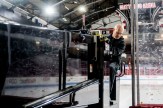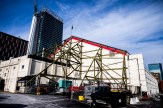Here’s how artists are creating–and surviving–during the COVID-19 pandemic
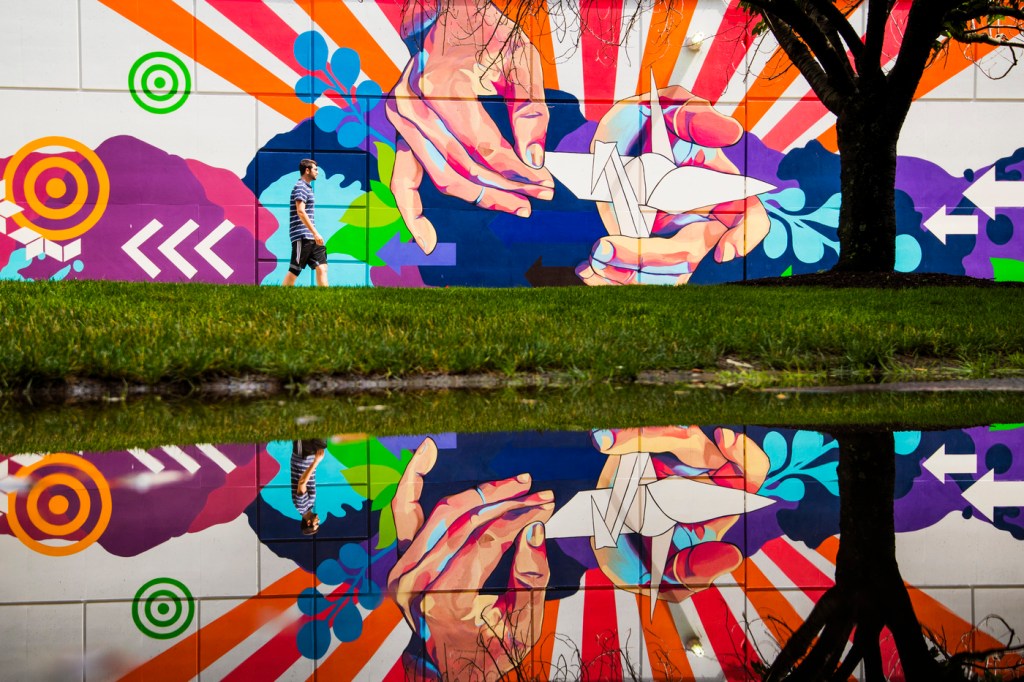
In a normal year, artist Silvia López Chavez would usually be out in the Boston area, creating swirls and dives of bright colors along the giant walls that she has made her canvas—like the mural she painted in 2019, on Northeastern’s Boston campus, outside Ruggles Station.
But because of the COVID-19 pandemic and the effects it has had on the U.S. economy—46 million unemployment claims as of this past week—artists have had to adapt as many projects have been cancelled or put on hold. A survey by Americans for the Arts, a nonprofit organization based in Washington, D.C., found that 62 percent of artists were fully unemployed, and more than 94 percent had experienced a loss of income from the pandemic.
López Chavez experienced these effects firsthand, and she’s had to focus on “whatever work will put food on the table.” But, she says, adapting during tough times is nothing new for an artist.

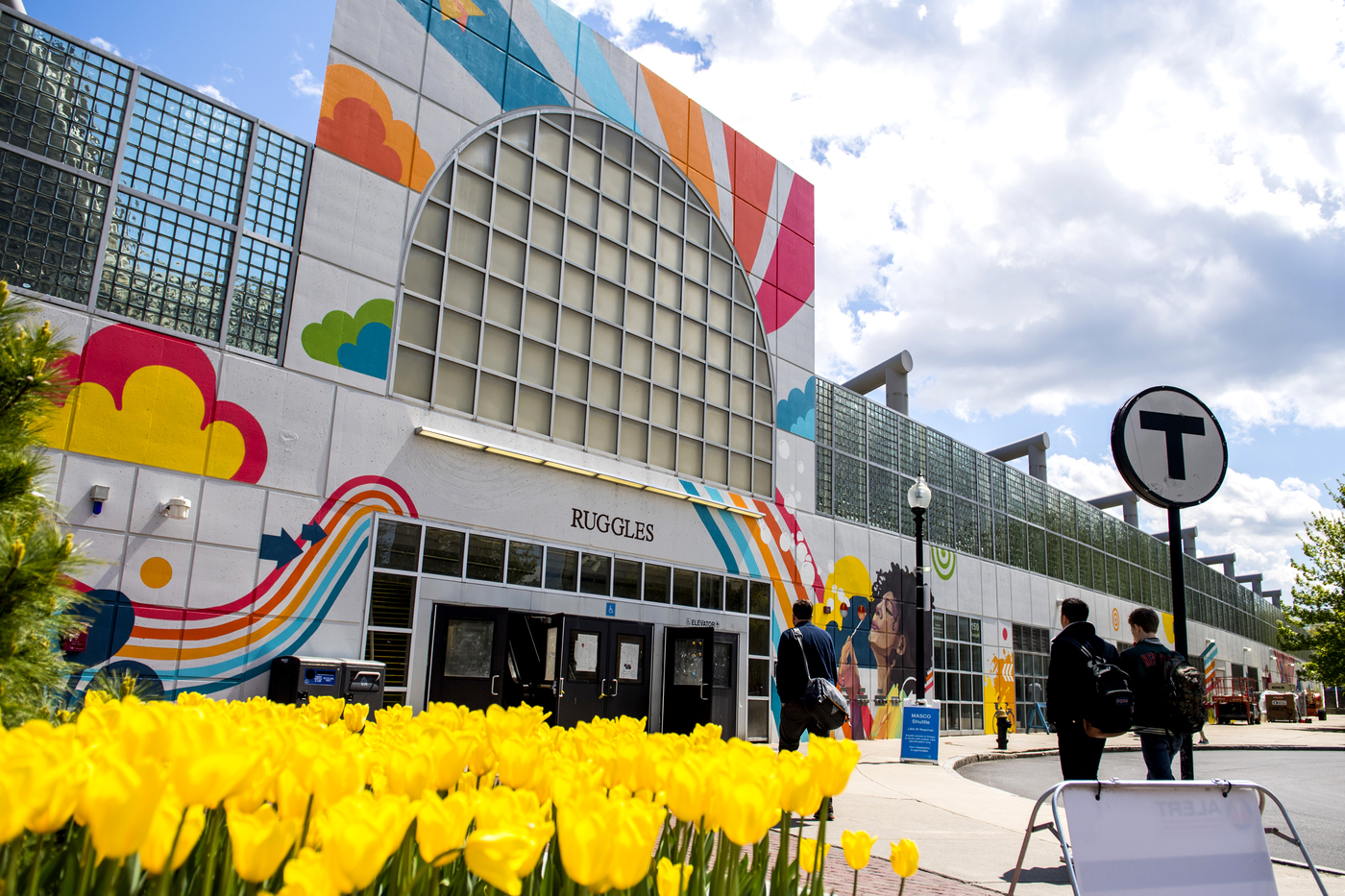
“Artists are survivors who know how to mold ourselves to fit our needs,” says López Chavez, who is based in East Boston. “We’re used to solving problems with very little.”
As the sun shines through the 12-pane windows into López Chavez’s atelier, she sits at her desk, and draws in her sketchbook or on her computer. Quarantine, although stressful, has given her time to think—about her art, and specifically, the role that public art can have on people.
“Now more than ever, I think people realize the importance of public art,” López Chavez says. “It has this capacity to bring joy, to bring wonder, to bring a glimpse of hope when you’re outside during this time that is so challenging and difficult.”
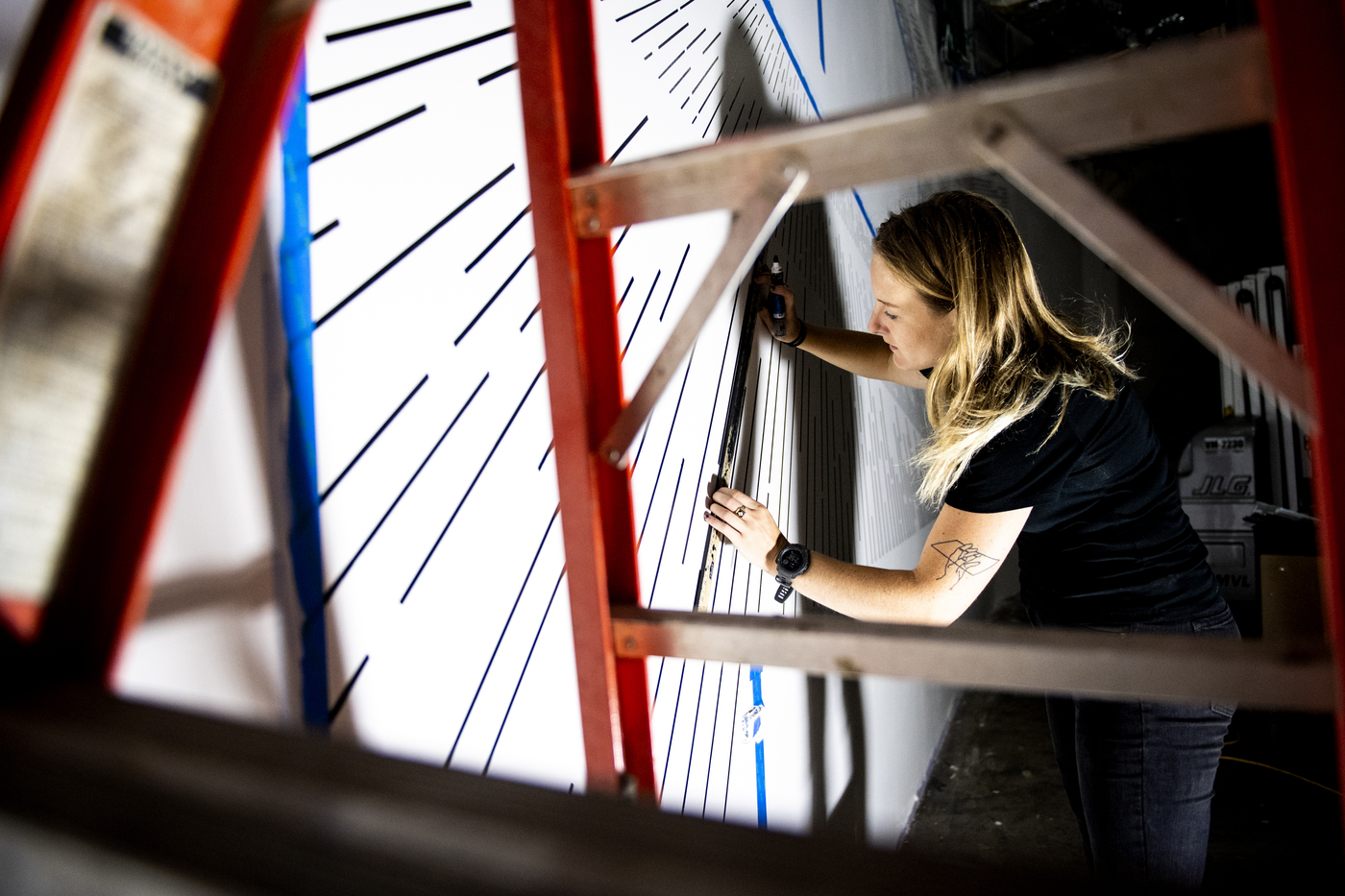
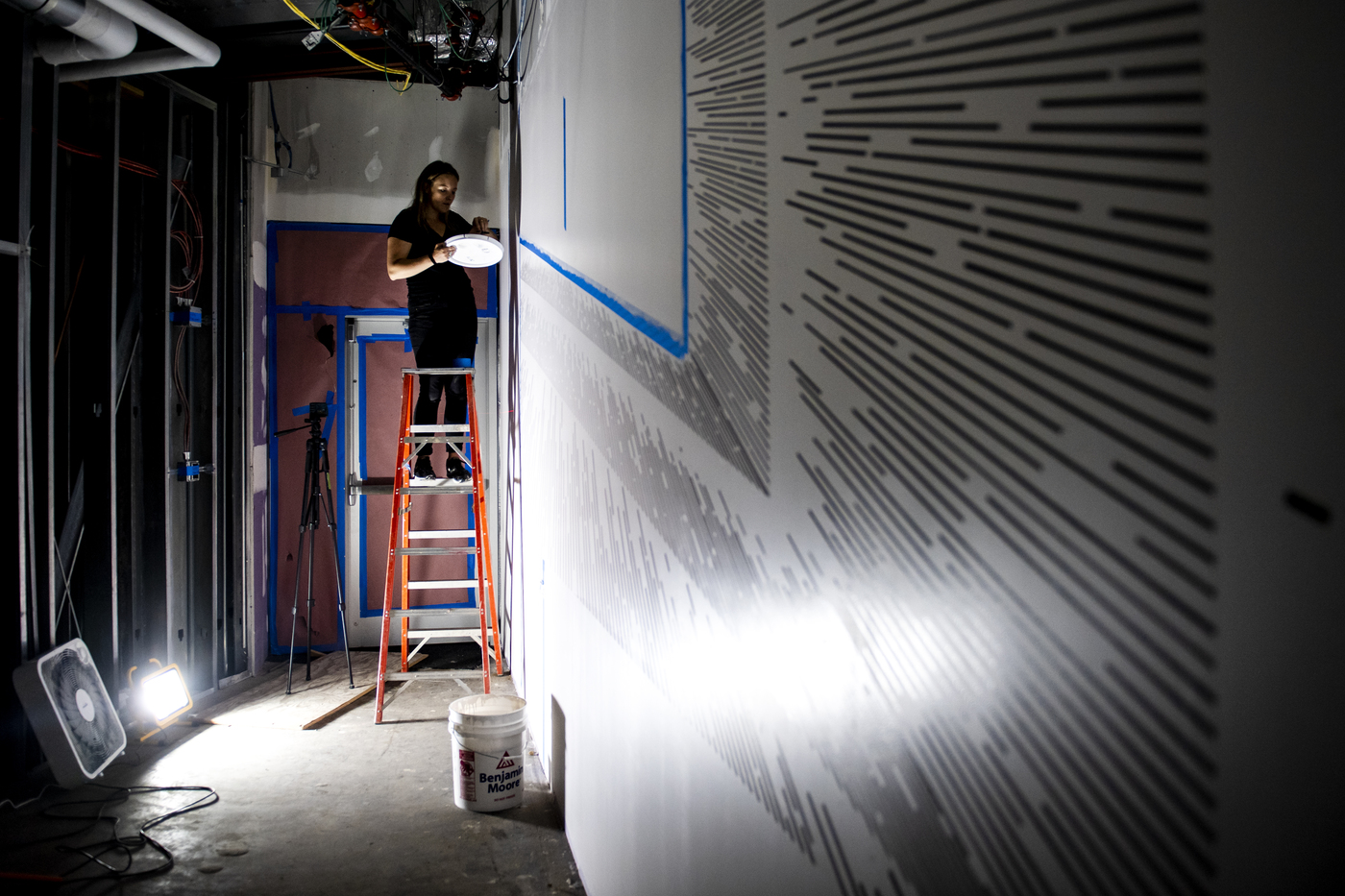
This led López Chavez to “think more digitally,” she says. She says she hopes to incorporate elements of augmented and virtual reality to her murals, which means that her mural could physically exist on a wall, and also virtually exist within a phone or computer for the person to interact with.
Right before the pandemic put the United States on pause, muralist Katy Ann Gilmore was returning from an art fair in New York City. Gilmore, like López Chavez, would normally spend this time traveling to the site of her next mural.
Instead, the Los Angeles-based artist says she felt a malaise come over her that made it difficult to stay creative.
“I just felt the weight of everything that’s going on in the world, and it took a while to get back into that creative mode,” says Gilmore, who painted a hypnotic mural on the Boston campus in late 2019. “I just told myself ‘OK, there’s crazy things happening, but you don’t have to start at 100 right away.’”
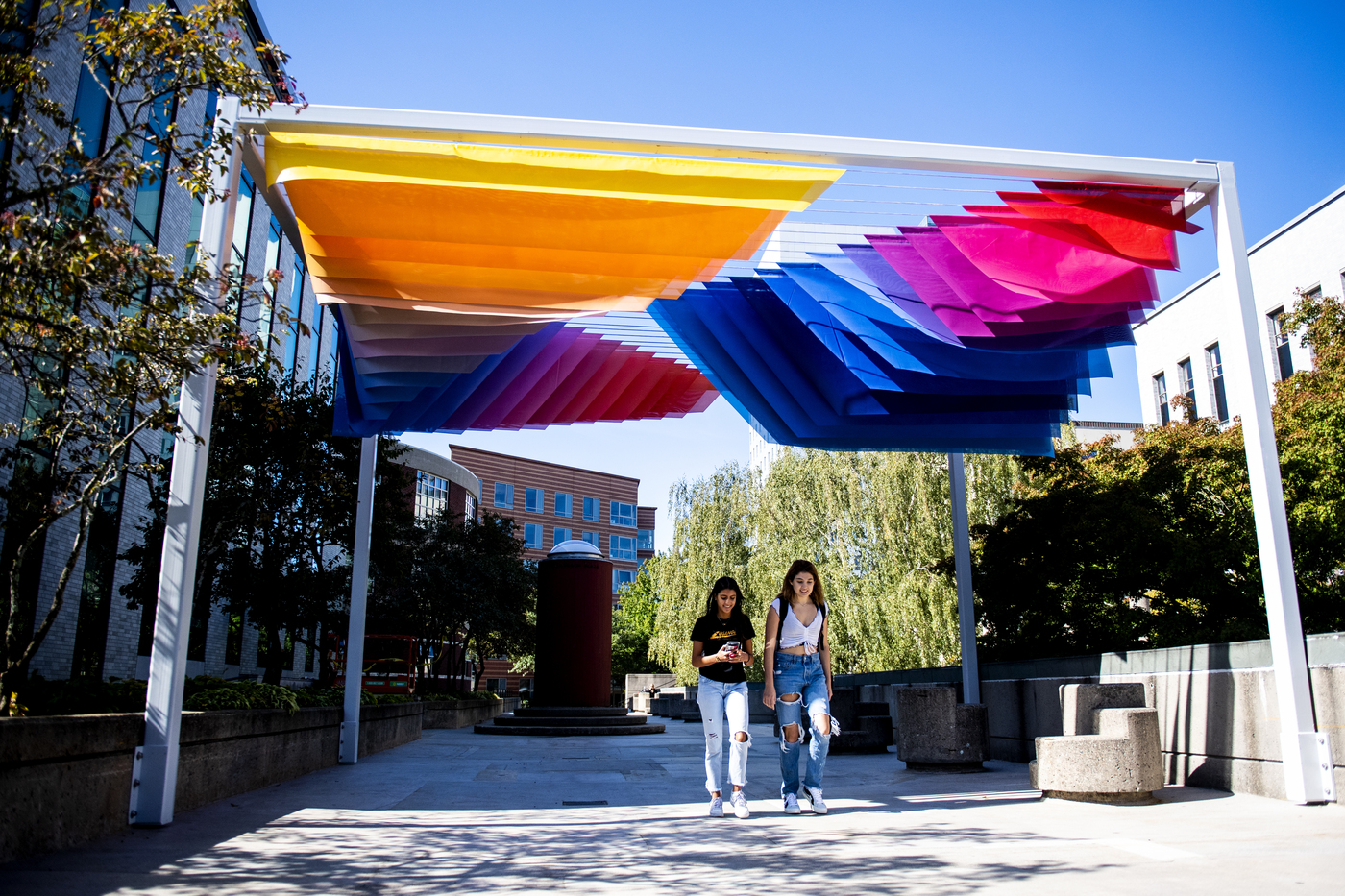
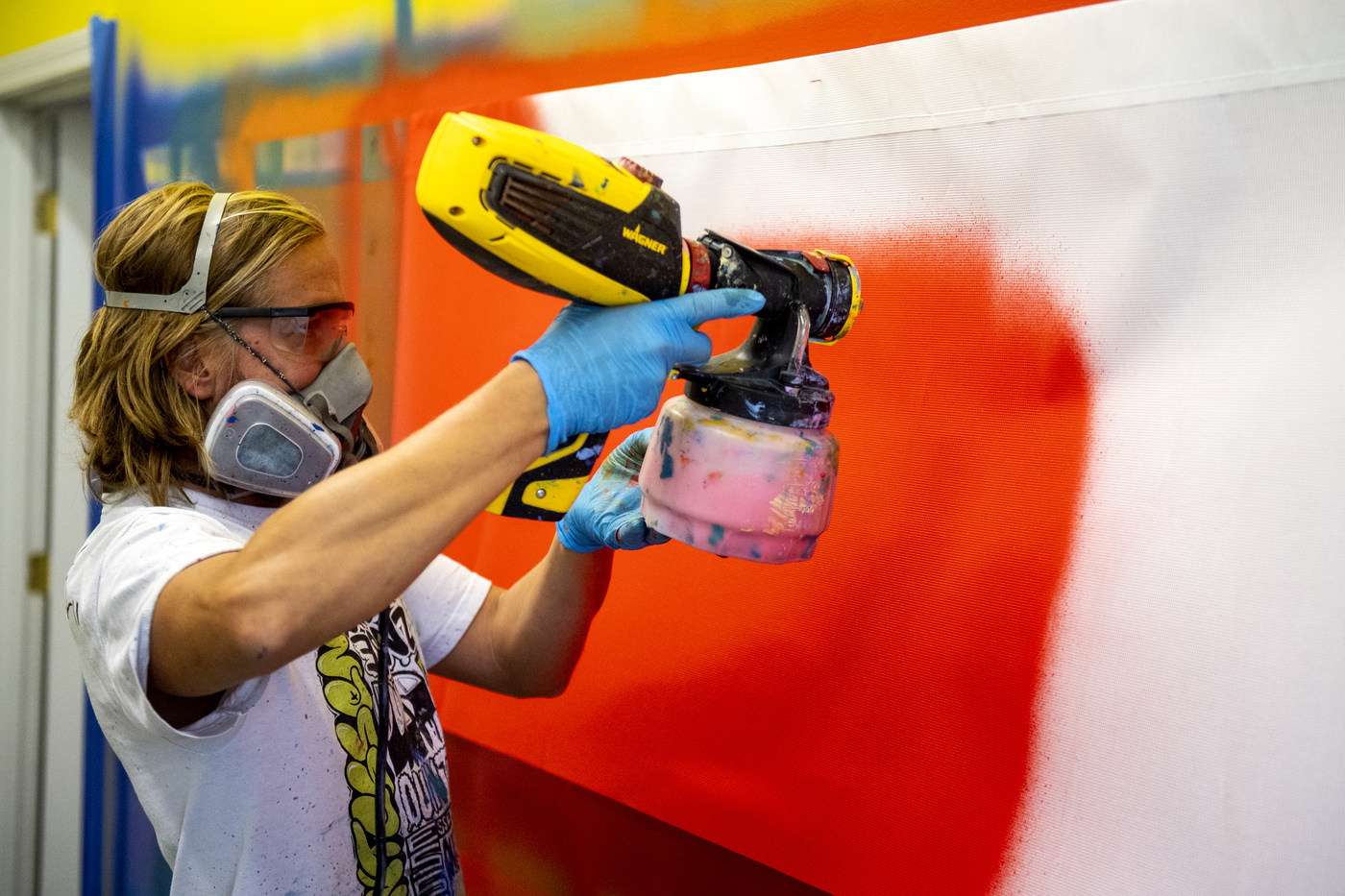
The lack of deadlines gave her time to recharge. She went on daily (physically distanced) walks, and connected more with friends and family over video chat.
It took her about a month to get back in the studio. Once she returned, she felt as though she were back in 2014, before she worked with art galleries, when she mainly sold her work through social media. It was “back to the basics,” she says.
She now spends most of her day sketching smaller designs in her notebook, fitting each small geometric line together to form optical illusions. Gilmore says she’s been able to sustain herself through selling these pieces over Instagram.
On the other side of the world, street artist Tomislav Topic stares at an empty white canvas in his Berlin studio. Under normal circumstances, Topic would be stressed, but the cancellation of projects paused the constant flow of emails, phone calls, and deadlines that previously filled up his day. Like Gilmore, Topic says, the respite reminded him of the earlier days in his career.
“It brought me back to the time before we had any success, when we had the time to experiment, or just hang out in the studio, even if we didn’t get any work done,” says Topic, who is one half of the German street art duo Quintessenz.
Quintessenz has created public art installations in cities around the world, including Berlin and Hamburg, Germany; Shanghai and Hong Kong, China; Paris, France; and most recently, Boston, where they created a vibrant display of colors on Northeastern’s campus.
When international travel restrictions came into effect, Topic had been in the process of designing a large installation—estimated 60 meters long, 20 meters wide, and 8 meters tall—that the duo planned to build in Beijing.
As did many other artists, Topic went virtual, uploading blueprints and color schemes. Now, he is now overseeing the production of the installation in Beijing from his studio.
For media inquiries, please contact media@northeastern.edu.
